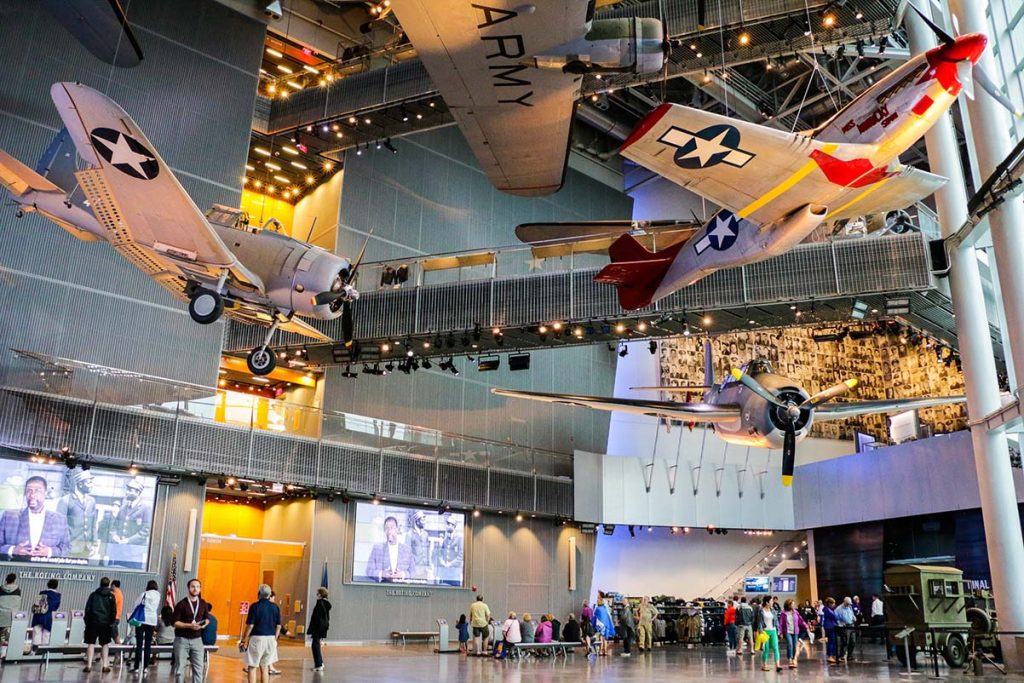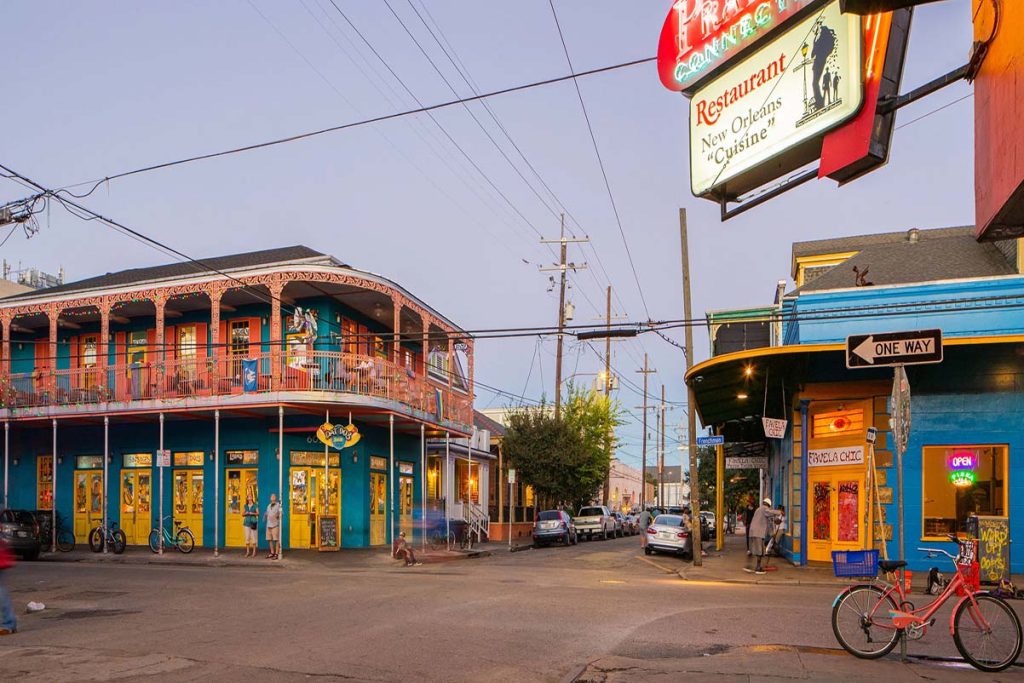New Orleans has always been a place that beckoned to my wanderlust soul. With its rich history, vibrant culture, and an atmosphere thick with the scent of mystery and jazz, I knew it was a city that I needed to explore. After spending a week immersing myself in the energy of New Orleans, I’m excited to share my experiences and guide you through ten must-visit attractions in this enchanting city. Each one left an indelible mark on me, and I hope my words can transport you there, even if just for a moment.
1. The French Quarter
Stepping into the French Quarter feels like stepping back in time. The district is the beating heart of New Orleans, where history, music, and architecture intertwine to create something truly magical. I spent hours wandering through its cobblestone streets, captivated by the wrought-iron balconies draped with colorful flowers and the sounds of jazz drifting from every corner.
The French Quarter is home to the iconic Bourbon Street, which is as lively and boisterous as I had imagined. Even if you’re not a fan of crowded places, it’s worth a stroll to witness the sheer energy of the place. For a more subdued experience, I recommend heading to Royal Street, where art galleries, antique shops, and street performers offer a more relaxed vibe. The Historic New Orleans Collection, located on Royal Street, provides a deep dive into the city’s history and is a must for history buffs like myself.
2. Jackson Square
Just a short walk from the French Quarter, Jackson Square is a picturesque park that has been at the heart of New Orleans for centuries. As I stood in the center of the square, with the magnificent St. Louis Cathedral towering above me, I couldn’t help but feel a sense of awe. The cathedral’s stunning architecture is a testament to the city’s rich religious history, and its interiors are equally breathtaking.
Around the square, you’ll find artists displaying their work, musicians playing for tips, and tarot card readers eager to reveal your future. I spent a leisurely afternoon here, simply soaking in the ambiance and enjoying the local talent. Café du Monde, located adjacent to Jackson Square, is a perfect spot for a quick break. Their beignets—pillowy fried dough covered in powdered sugar—are legendary, and trust me, they taste even better when enjoyed with a view of the square.
3. The Garden District
The Garden District is a world away from the lively chaos of the French Quarter. This neighborhood, with its tree-lined streets and stately mansions, exudes a sense of Southern elegance. I took a guided walking tour to learn more about the history of the area and the stories behind some of its most famous homes, like the Buckner Mansion and the “Cornstalk” Fence House.
One of the highlights of my time in the Garden District was a visit to Lafayette Cemetery No. 1. This historic cemetery is one of the oldest in New Orleans, and its hauntingly beautiful tombs and mausoleums offer a glimpse into the city’s past. It was a humbling experience to walk among the graves, some dating back to the 1800s, and to think about the lives that had come and gone in this city.
4. Bourbon Street
No trip to New Orleans would be complete without experiencing Bourbon Street. Known for its vibrant nightlife and constant party atmosphere, Bourbon Street is a place where the music never stops, and the drinks keep flowing. Although I’m not typically drawn to such rowdy environments, there was something infectious about the street’s energy that pulled me in.
Walking down Bourbon Street at night is an assault on the senses in the best way possible. Neon lights flash above as jazz, blues, and brass band music pour out of every bar and club. The street is a mix of locals, tourists, street performers, and vendors, all contributing to a sense of celebration that’s impossible to resist. Even if you’re not looking to party, a visit to Bourbon Street is essential just to witness its unique atmosphere.
5. The National WWII Museum

As a history enthusiast, I was particularly excited to visit The National WWII Museum. Located just outside the French Quarter, this museum is an immersive and powerful tribute to the men and women who served during World War II. The exhibits are extensive and well-curated, offering a detailed look at the war from multiple perspectives.
One of the museum’s standout features is its use of multimedia displays and interactive exhibits. The 4D movie “Beyond All Boundaries,” narrated by Tom Hanks, was a particular highlight. It’s an emotional experience that brings the realities of war to life in a way that few other museums can match. I spent an entire day here, but even that didn’t feel like enough time to fully appreciate everything the museum has to offer.
6. Mardi Gras World
Mardi Gras is synonymous with New Orleans, and while I wasn’t in the city during the actual festival, Mardi Gras World provided a fantastic glimpse into the behind-the-scenes magic of this iconic celebration. The warehouse is where many of the intricate floats used in the Mardi Gras parades are designed and built, and a tour here offers a fascinating look at the artistry and craftsmanship involved.
Walking among the massive floats and colorful sculptures, I gained a newfound appreciation for the work that goes into creating the spectacle that is Mardi Gras. The tour also includes a short film on the history of the festival, which helped me understand its significance to the people of New Orleans. It’s a great place to visit if you’re curious about Mardi Gras but can’t make it to the city during the festivities.
7. Preservation Hall
For me, no visit to New Orleans would be complete without experiencing its world-famous jazz scene. Preservation Hall, located in the French Quarter, is one of the best places to do just that. This historic venue has been dedicated to preserving traditional New Orleans jazz since the 1960s, and attending a performance here was one of the highlights of my trip.
The hall itself is intimate and unassuming, with wooden benches and no air conditioning—just like it’s been for decades. But what it lacks in modern amenities, it more than makes up for in atmosphere. The musicians who play at Preservation Hall are some of the best in the city, and their passion for the music is palpable. As I sat in the dimly lit room, listening to the soulful sounds of the trumpet, trombone, and clarinet, I felt like I was experiencing a piece of living history.
8. St. Louis Cemetery No. 1
New Orleans is a city known for its cemeteries, and St. Louis Cemetery No. 1 is perhaps the most famous of them all. Established in 1789, it’s the oldest cemetery in the city and the final resting place of many notable figures, including the voodoo priestess Marie Laveau.
I opted for a guided tour, as the cemetery can only be visited with an authorized guide. Walking through the narrow pathways between the above-ground tombs, I was struck by the eerie beauty of the place. The whitewashed tombs, many adorned with faded flowers and offerings, stand as silent witnesses to the passage of time. My guide shared fascinating stories about the people buried here and the unique burial customs of New Orleans, making the experience both educational and deeply moving.
9. Audubon Park and Zoo
For a change of pace, I spent a day exploring Audubon Park and Zoo. The park, located in the Uptown neighborhood, is a lush oasis of oak trees, lagoons, and walking paths. It’s a perfect spot for a relaxing stroll or a picnic, and the park’s peaceful atmosphere provided a welcome respite from the hustle and bustle of the city.
The Audubon Zoo, situated within the park, is one of the best zoos I’ve ever visited. The exhibits are thoughtfully designed to mimic the animals’ natural habitats, and there’s a strong emphasis on conservation and education. I particularly enjoyed the Louisiana Swamp exhibit, which features native wildlife and a recreated Cajun village. The zoo’s collection of animals is diverse, and I spent hours wandering through the exhibits, marveling at everything from playful otters to majestic elephants.
10. Frenchmen Street

While Bourbon Street is the more famous nightlife destination, Frenchmen Street is where the locals go for live music. Located just outside the French Quarter in the Faubourg Marigny neighborhood, Frenchmen Street is lined with clubs and bars that showcase some of the best musical talent in the city.
One of my favorite nights in New Orleans was spent hopping between venues on Frenchmen Street, soaking in the eclectic mix of jazz, blues, and funk. The Spotted Cat Music Club and d.b.a. are two of the most popular spots, but there are plenty of other hidden gems to discover. The street also hosts a nightly art market, where local artists sell their creations. It’s a great place to pick up a unique souvenir or just to chat with the artists and learn more about their work.
New Orleans is a city that defies easy description. It’s a place where history, culture, and music are woven together into a vibrant tapestry that captivates everyone who visits. My time in New Orleans was filled with unforgettable experiences, from the lively streets of the French Quarter to the serene beauty of the Garden District. Each of these ten attractions offered something unique, and together they provided a deep and multifaceted understanding of what makes New Orleans so special.
As I boarded my flight home, I found myself already longing to return. There’s so much more to see and do in New Orleans, and I know that no matter how many times I visit, the city will always have something new to offer. If you’re planning a trip to New Orleans, I hope this guide helps you discover some of the
magic that I found there. And if you’ve already been, I hope it brings back fond memories of your own adventures in this incredible city.

